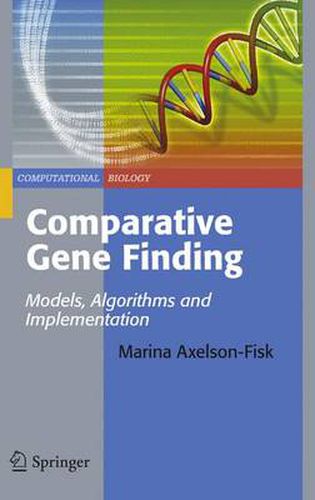Readings Newsletter
Become a Readings Member to make your shopping experience even easier.
Sign in or sign up for free!
You’re not far away from qualifying for FREE standard shipping within Australia
You’ve qualified for FREE standard shipping within Australia
The cart is loading…






This title is printed to order. This book may have been self-published. If so, we cannot guarantee the quality of the content. In the main most books will have gone through the editing process however some may not. We therefore suggest that you be aware of this before ordering this book. If in doubt check either the author or publisher’s details as we are unable to accept any returns unless they are faulty. Please contact us if you have any questions.
Comparative genomics is a new and emerging ?eld, and with the explosion of ava- able biological sequences the requests for faster, more ef?cient and more robust algorithms to analyze all this data are immense. This book is meant to serve as a self-contained instruction of the state-of-the-art of computational gene ?nding in general and of comparative approaches in particular. It is meant as an overview of the various methods that have been applied in the ?eld, and a quick introduction into how computational gene ?nders are built in general. A beginner to the ?eld could use this book as a guide through to the main points to think about when constructing a gene ?nder, and the main algorithms that are in use. On the other hand, the more experienced gene ?nder should be able to use this book as a reference to different methods and to the main components incorporated in these methods. I have focused on the main uses of the covered methods and avoided much of the technical details and general extensions of the models. In exchange I have tried to supply references to more detailed accounts of the different research areas touched upon. The book, however, makes no claim on being comprehensive.
$9.00 standard shipping within Australia
FREE standard shipping within Australia for orders over $100.00
Express & International shipping calculated at checkout
This title is printed to order. This book may have been self-published. If so, we cannot guarantee the quality of the content. In the main most books will have gone through the editing process however some may not. We therefore suggest that you be aware of this before ordering this book. If in doubt check either the author or publisher’s details as we are unable to accept any returns unless they are faulty. Please contact us if you have any questions.
Comparative genomics is a new and emerging ?eld, and with the explosion of ava- able biological sequences the requests for faster, more ef?cient and more robust algorithms to analyze all this data are immense. This book is meant to serve as a self-contained instruction of the state-of-the-art of computational gene ?nding in general and of comparative approaches in particular. It is meant as an overview of the various methods that have been applied in the ?eld, and a quick introduction into how computational gene ?nders are built in general. A beginner to the ?eld could use this book as a guide through to the main points to think about when constructing a gene ?nder, and the main algorithms that are in use. On the other hand, the more experienced gene ?nder should be able to use this book as a reference to different methods and to the main components incorporated in these methods. I have focused on the main uses of the covered methods and avoided much of the technical details and general extensions of the models. In exchange I have tried to supply references to more detailed accounts of the different research areas touched upon. The book, however, makes no claim on being comprehensive.